Bugleweed (Ajuga Reptans) Care & Propagation Guide
Written by Iris
Nov 13 2021
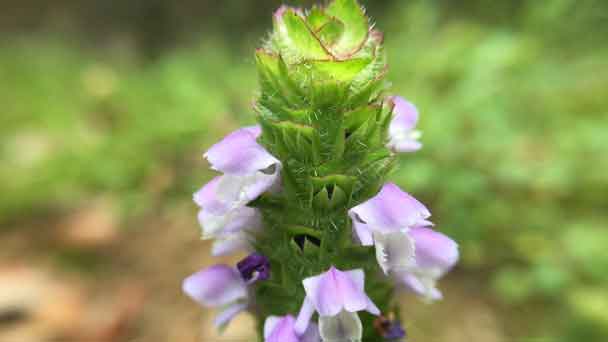
Bugleweed (Ajuga reptans), native to Europe, North Africa and southwest Asia, is a broad-leaved, evergreen to semi-evergreen, perennial herbaceous ground cover plant of the labiaceae family. Bugleweed's compact, dense cushions have beautiful little clusters of purple flowers that appear in mid to late spring.
When sprouts are viable, Bugleweed can be seen in large containers. Once strengthened, newBugleweed plants can be transplanted into the garden.
Easily grown in average, moderate moisture, part shade in well-drained soil under full sunlight. Prioritizes moist, moist soil with good drainage, but tolerates moderately dry ones.
Will grow in full shade, but the best leaf color is usually in part-sun locations (at least 3-4 hours of sun per day). Provide good air circulation in hot and moist areas where crown rot is a problem.
Split the plants if they become overcrowded. This low-growing bugleade will spread into the garden by stolons (reptiles mean crawling) to create an attractive, mat-like ground cover.
Bugleweed plants can be pruned back to the ground after flowering, if necessary, to rejuvenate the foliage.
Larger seedlings can be set up on a high mower to remove spent flower spikes and to clean up the appearance of seedlings.
Space bugleweed plant for quick cover other than 6-9 ”. Invariants, one can quickly remove any non-different leaves that appear.
Read More:
12 Wonderful Evergreen Shrubs for Your Garden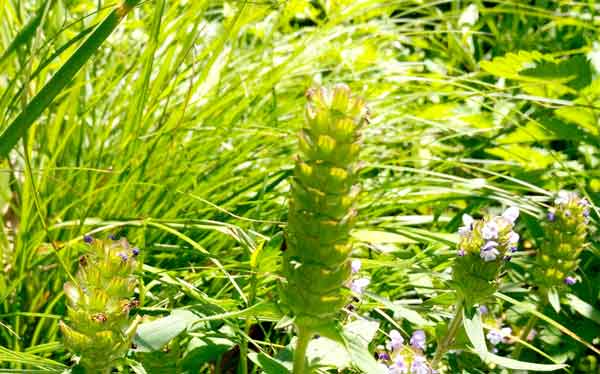
It is best to do this by simply removing the runners from the mother plant. This is easily done when Bugleweed are young so you should not have much trouble with them. It becomes more difficult as they age because they will become entangled in the main plant.
Keep in mind that it is recommended to remove runners periodically even if you don't want to divide your plant. Removing runners will prevent your Bugleweed plants from spreading too much. This will help you keeping your Bugleweed contained in the area where you want them to grow.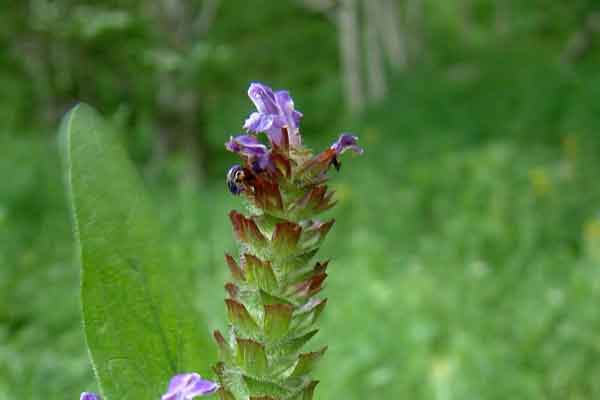
In case you notice non-variegated foliage on variegated forms of Bugleweed plants, make sure to remove it. It will prevent the Bugleweed plant from going back to its original green form and it will help keeping its colors.
Bugleweed is susceptible to the root-knot nematode (Meloidogyne incognita), which mainly occurs from the Midlands to the Low Country. Infected plantings will begin to thin out in spots and plants may die. Roots of infected plants will contain small knots caused by the feeding of these microscopic worms.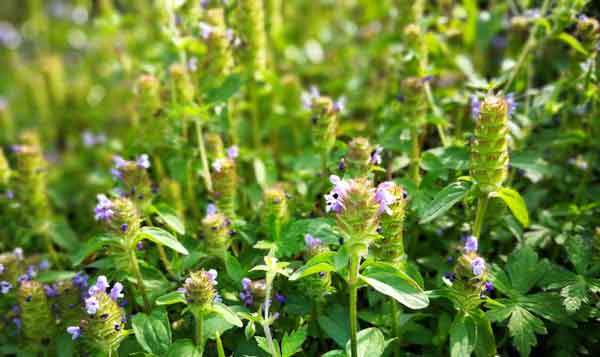
Bugleweed 'Burgundy Glow': attractive leaves have silvery sheen and are tinted with deep red. Margins are tinted cream and various shades of pink. May not be evergreen in cold winters.
Bugleweed 'Catlin's Giant': large leaves are up to 6 inches long and purplish maroon/bronze. Does not tolerate below-zero temperatures well.
Bugleweed 'Giant Bronze': 9-inch-tall plants with deep bronze green foliage.
Bugleweed 'Jungle Bronze' and 'Jungle Green': green-leaved or bronze-leaved plants with very large, 10-inch-tall flower spikes.
Bugleweed 'Rainbow' ('Multicolor'): bronze-tinted dark green leaves mottled with magenta, peach, cream and pink
Bugleweed 'Pink Elf': deep green foliage and showy deep pink blooms on short flower stems
Bugleweed 'Variegata': creamy white margins and splotching mark grayish green foliage.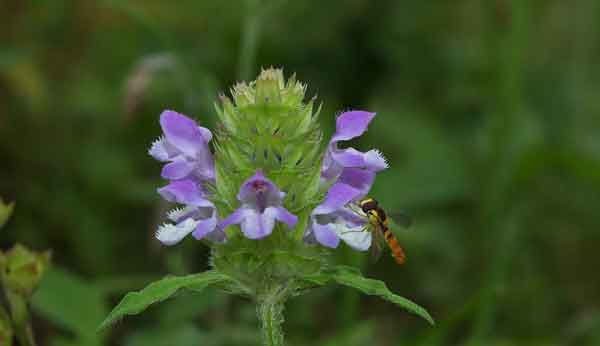
How to Grow Bugleweed (Ajuga reptans)Bugleweed Propagation with SeedsBugleweed Propagation with Clumps DivisionHow to Care for Bugleweed (Ajuga reptans)Bugleweed Lighting RequirementsBugleweed Soil CareBugleweed WateringBugleweed Temperature & Humidity CareBugleweed FertilizerBugleweed PruningBugleweed Pests & DiseasesVarieties of Bugleweed (Ajuga reptans)Bugleweed (Ajuga reptans) FAQIs Bugleweed Invasive?Is Bugleweed Poisonous?What Is Bugleweed Used For?Is Bugleweed Edible?
How to Grow Bugleweed (Ajuga reptans)
Bugleweed Propagation with Seeds
In pots filled with the seed-starter mixture, begin the seeds of the Bugleweed. Cover the Bugleweed seeds with a thin layer of compost; They will germinate within a month.When sprouts are viable, Bugleweed can be seen in large containers. Once strengthened, newBugleweed plants can be transplanted into the garden.
Easily grown in average, moderate moisture, part shade in well-drained soil under full sunlight. Prioritizes moist, moist soil with good drainage, but tolerates moderately dry ones.
Will grow in full shade, but the best leaf color is usually in part-sun locations (at least 3-4 hours of sun per day). Provide good air circulation in hot and moist areas where crown rot is a problem.
Split the plants if they become overcrowded. This low-growing bugleade will spread into the garden by stolons (reptiles mean crawling) to create an attractive, mat-like ground cover.
Bugleweed plants can be pruned back to the ground after flowering, if necessary, to rejuvenate the foliage.
Larger seedlings can be set up on a high mower to remove spent flower spikes and to clean up the appearance of seedlings.
Space bugleweed plant for quick cover other than 6-9 ”. Invariants, one can quickly remove any non-different leaves that appear.
Read More:
12 Wonderful Evergreen Shrubs for Your Garden

Bugleweed Propagation with Clumps Division
It is very easy to propagate Bugleweed. Bugleweed can be propagated simply by digging out the established clumps in the fall and dividing them. Alternatively, you may do this early in the spring.It is best to do this by simply removing the runners from the mother plant. This is easily done when Bugleweed are young so you should not have much trouble with them. It becomes more difficult as they age because they will become entangled in the main plant.
Keep in mind that it is recommended to remove runners periodically even if you don't want to divide your plant. Removing runners will prevent your Bugleweed plants from spreading too much. This will help you keeping your Bugleweed contained in the area where you want them to grow.

How to Care for Bugleweed (Ajuga reptans)
Bugleweed Lighting Requirements
Bugleweed can tolerate almost any type of lighting conditions. They can grow in full sun, partial shade or even full shade. There is an advantage and disadvantage to both sun and shade. The full sun produces smaller leaves but it also grows more flower spikes.Bugleweed Soil Care
Bugleweed plants can tolerate a wide range of growing conditions so you should not have any problems there. However, make sure that the soil is well-drained. Ideally, the soil should be acidic, with a pH values between 3.7 and 6.5. These plants prefer moist soil but can also tolerate some drought.Bugleweed Watering
Water Bugleweed more frequently during hot, dry summer periods. Water bugleweed with a hose when the top 1 to 2 inches of soil becomes dry. Water thoroughly and deeply, so the soil is moist but not soggy. Water once every two to three weeks during the remainder of the year.Bugleweed Temperature & Humidity Care
Bugleweed does well in a wide range of temperatures, but in very hot, humid areas, it requires good air circulation to prevent crown rot.Bugleweed Fertilizer
Bugleweed plants are light feeders that require little if any fertilizer. Unlike lawn grasses that need regular applications of high-nitrogen fertilizer, Bugleweed would prefer an annual feeding in late spring or early winter with a natural or organic plant food. Alternatively, a slow-release low-nitrogen fertilizer can be used. A liquid plant fertilizer can be used at half strength in containers or garden beds.Bugleweed Pruning
Pruning your Bugleweed is easy. You can do it by simply mowing or cutting the foliage back to the ground. It is also recommended to thin out the larger, crowded groupings every two to three years. This will reduce the risk of the crown rot.In case you notice non-variegated foliage on variegated forms of Bugleweed plants, make sure to remove it. It will prevent the Bugleweed plant from going back to its original green form and it will help keeping its colors.
Bugleweed Pests & Diseases
In the South, several fungi cause crown and root rots, particularly in carpet bugleweed. Roughly circular patches of plants die out. Sometimes entire plantings may die. Planting in well-ventilated areas, dividing every 2 to 3 years, and application of a recommended fungicide help control this problem.Bugleweed is susceptible to the root-knot nematode (Meloidogyne incognita), which mainly occurs from the Midlands to the Low Country. Infected plantings will begin to thin out in spots and plants may die. Roots of infected plants will contain small knots caused by the feeding of these microscopic worms.

Varieties of Bugleweed (Ajuga reptans)
Bugleweed 'Atropurpurea': showy purple green leavesBugleweed 'Burgundy Glow': attractive leaves have silvery sheen and are tinted with deep red. Margins are tinted cream and various shades of pink. May not be evergreen in cold winters.
Bugleweed 'Catlin's Giant': large leaves are up to 6 inches long and purplish maroon/bronze. Does not tolerate below-zero temperatures well.
Bugleweed 'Giant Bronze': 9-inch-tall plants with deep bronze green foliage.
Bugleweed 'Jungle Bronze' and 'Jungle Green': green-leaved or bronze-leaved plants with very large, 10-inch-tall flower spikes.
Bugleweed 'Rainbow' ('Multicolor'): bronze-tinted dark green leaves mottled with magenta, peach, cream and pink
Bugleweed 'Pink Elf': deep green foliage and showy deep pink blooms on short flower stems
Bugleweed 'Variegata': creamy white margins and splotching mark grayish green foliage.

Bugleweed (Ajuga reptans) FAQ
Is Bugleweed Invasive?
Bugleweed has become one of the common planting species that’s invasive. Thankfully, there are ways to get this plant under control if you don’t want it in your garden. To stop this plant from spreading, try hand pulling, one of the best solutions for an environmentally-friendly approach. Water the area the day before you intend to pull the bugle, plus loosen the soil around the plants with a garden fork. Taking your time to remain careful and not damage any surrounding plants; dig deep under the roots. Take care not to snap the roots, as this could lead to increased spreading. You’ll have to remain persistent and patient, but this technique will help to prevent the bugle plant from becoming increasingly invasive.Is Bugleweed Poisonous?
It's reported that Bugleweed are safe around most people. Bugleweed are also not poisonous to dogs.What Is Bugleweed Used For?
You can use Bugleweed to treat premenstrual syndrome, breast pain, anxiety, insomnia, and can even help with nosebleeds and heavy bleeding during a menstrual cycle. You may also find Bugleweed in oils and ointments for skin treatments. But you should consider that Bugleweed can lower blood sugar levels if consumed in high amounts, so make sure to check with a doctor if you have any major concerns.Is Bugleweed Edible?
Yes. Steep the Bugleweed leaves in tea or add to salads or casseroles. The young shoots work particularly well in salads. If you’re planning on consuming this flower, you may need them to grow a little longer than usual. And if you leave the flowers uncut between May and July (or late spring), they’ll become very attractive to bees.Latest Updated
- Benefits of Bugleweed - 7 Science-backed Health Benefits
- Bugleweed Dangers & Side Effects - Is It Poisonous?
- How to Plant Evergreen Trees - What You Should Know
- When to Plant Evergreens - Grow Guide for Evergreen Trees
- 12 Wonderful Evergreen Shrubs for Your Garden
- 12 Popular Evergreen Plants with Pictures for Beginners
- When And How To Prune A Lilac Bush Like a Pro
- How to Grow & Care for Lilac Vine (Hardenbergia Violacea)
- Japanese Lilac Tree (Syringa Reticulata) Care & Propagation Guide
- Shumard Oak Pros and Cons - What to Know
Popular Articles
- Winter maintenance of Antirrhinum Majus
- How to Grow Terminalia Mantaly Tree
- How to Grow and Care for Crossostephium Chinense
- How to grow Antirrhinum Majus in spring
- Peristeria Elata (Dove Orchid) Profile: Info & Care Guide
- Underwatered Snake Plant (Sansevieria Trifasciata) - Signs And How To Fix
- How to Care for Brazilian Jasmine Plant (Mandevilla Sanderi)
- How to Grow & Care for Graptopetalum Purple Delight in Summer
- Rosa Chinensis (China Rose): Plant Growing & Care Tips
- How to Care for Baby Sun Rose (Aptenia Cordifolia)